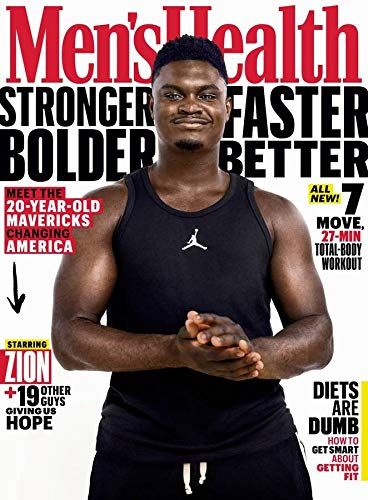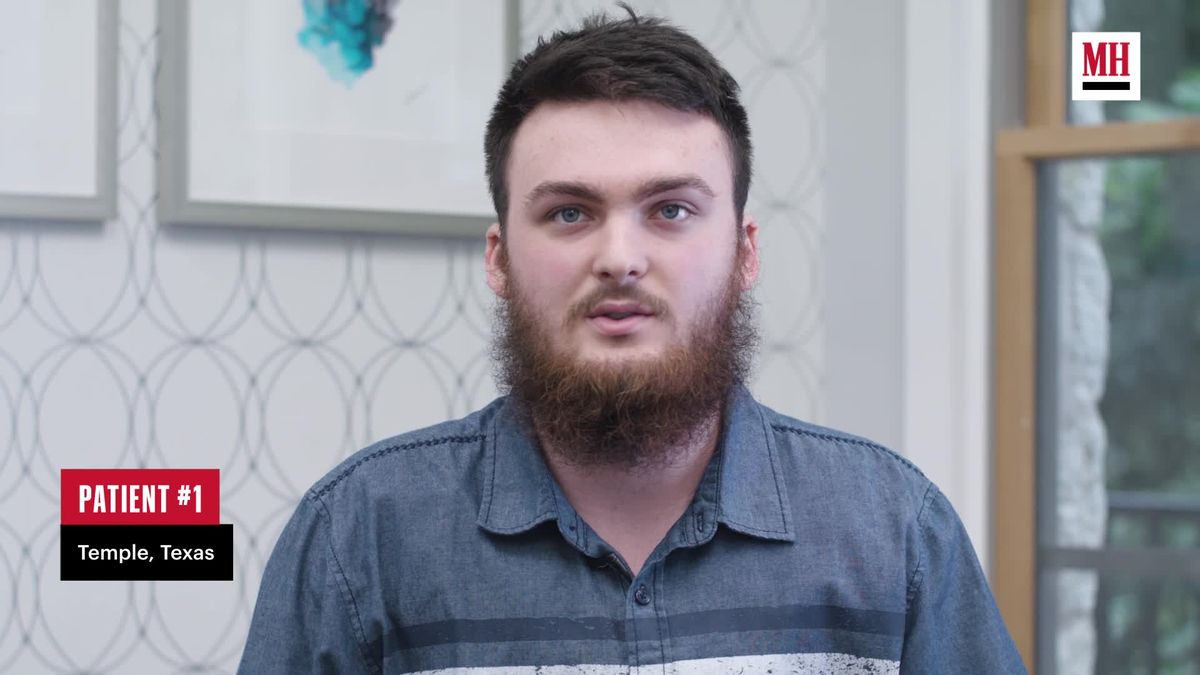WHEN IT COMES to talking about health issues, there are some things we’re not as willing to bring up. How do I get rid of the pimples on my balls? Why am I pooping so much? Why am I developing fat in my chest? Why are my nipples sore?
They seem to be strange problems to have, and some guys are embarrassed to talk about them. But there’s no need to be, as nipple soreness is a valid health concern that deserves an answer. Plus, you shouldn’t go around in pain.
Men commonly experience nipple soreness, too. It can be extremely uncomfortable, and can develop into even worse problems, like bleeding and chafing. The issue can stem from a number of things, ranging in severity. The good news is there are plenty of treatment options, and most causes aren’t super serious if caught early.
Here’s a round up of what could be causing that nagging nipple pain.
You Might Have A Muscle Strain
That pain you might be feeling may be a bit deeper than the surface nipple. A sore nipple can actually be the sign of a pulled or strained chest muscle. These muscles sit just underneath your nipple, so it’s possible for pain to radiate to that area if there’s an issue. If it is a muscle issue, though, it will probably feel like a different kind of soreness—more associated with a deep, aching pain rather than a surface-level stinging pain that’s commonly associated with skin irritation.
You’re Wearing the Wrong Workout Clothes
“Friction of clothing associated with running or exercise is one of the most common causes of nipple pain in men. Aptly named ‘runner’s nipple,’ the condition speaks for itself,” says MH advisor Robert Glatter, MD, an assistant professor of emergency medicine at Northwell Health and attending emergency physician at Lenox Hill Hospital.
Tingling or increased sensitivity in the nipple can also happen, as well as chafing or skin breakdown with potential bleeding, he says. “Other than running, I also see this in patients who engage in exercises with lots of vertical and/or horizontal movements including soccer, rugby, plyometrics, boxing, as well as Zumba occasionally,” says Glatter.
Wearing a tight-fitting shirt or tank top that is not made from Lycra can lead to this chafing. Even looser-fitting cotton T-shirts and tank tops can cause trouble, he says. (To some extent, the shape of the nipple also matters. “A nipple that is pointier, with a greater ability to contact clothing, is more often at risk for chafing,” says Glatter.)
The fix? Newer synthetic fabrics such as Dri-Fit hug the body closely, reducing the chance of friction occurring in the first place. “I find that most of my patients prefer this type of fabric in selecting their athletic wear,” he says.
Some runners use petroleum jelly before they run to reduce chafing. (Some marathons even have it at aid stations in case you’re in a bad situation with that during the run.) An anti-chafe product like Body Glide is generally kinder to your clothing.
But a more reliable option that doesn’t just get rubbed off by the shirt that usually causes the chafing is a protective covering like a Band-Aid or a product like Nip Guards or Nip-Eaze. You may have to experiment a bit with those products to figure out what won’t fall off mid-workout.
There’s Been Excessive Friction to Your Nipple
It doesn’t have to just be friction due to clothing. Rubbing up on just about anything can cause the skin to become irritated. Though that commonly implies clothing, it can be other things. It could be your bedding if you sleep shirtless, or a loofah you use in the shower. It’s also possible for your nipples to hurt after sex, because of skin on skin friction. So, if you’re only really feeling pain after you do the do, that might explain why.
You May Have A Fabric Allergy
Even if you’re not an athlete, you can still get nipple friction and chafing. “Newly purchased clothing can be especially sensitive to a man’s nipples. Cotton fabrics that are coarse in nature as well as chemically treated may lead to greater sensitivity, manifested as an outright allergy or contact dermatitis,” he says. “If you have a history of eczema or dry skin, it’s more likely to occur.”
In extreme cases, you might notice hives, oozing blisters, dry skin, burning, and swelling. “Exposed nipples may develop redness or scaling, with potential formation of fluid-filled blisters that may resemble a burn. If this develops, it’s a good idea to avoid wearing that item of clothing, apply cool compresses, and speak with your physician,” says Glatter.
Consider whether wool is the source of your irritation; that fabric can create a buildup of sweat and moisture and lead to irritation, he says. “Wool sweaters are notorious for causing excess nipple sensitivity; a simple solution is to wear a Dri-Fit shirt underneath, which not only protects your nipples, but also absorbs moisture,” Glatter explains. That moisture buildup may lead to skin breakdown and secondary infection.
You May Have A Nipple Infection
Your nipples may also hurt due to a nipple infection. This can develop from irritation from self-grooming, if you trim with scissors or use a razor on nipple hairs. “Sharp scissors can lead to lacerations or puncture-type injuries. Injury to the nipple and aureolar tissue can lead to significant bleeding and pain, since the tissue has lots of blood vessels and nerves coursing through it,” says Glatter.
Infection may also develop as a result of such injuries. “If you develop warmth in the area, along with tenderness and swelling, it’s advisable to see your doctor as soon as possible. The presence of a fever or chills makes it more urgent, and a visit to your local ER is advised,” he says. It’ll be a bit more difficult to treat, but it’s still nothing to worry about. “Antibiotics will be necessary to treat the skin infection in your nipple. A 7 to 10-day course of treatment is typical,” he explains.
You Have Gynecomastia
“Gynecomastia happens when there’s excess fatty tissue in the breasts of males,” says Glatter. It can come from a few physiological reasons, such as an imbalance in the ratio between estrogen and testosterone, as well as from lifestyle factors, such as medications or alcohol use, he says.
“It’s not uncommon to see gynecomastia in adolescents. The good news is that it commonly resolves on its own in 1 to 2 years, without medications or need for surgical intervention,” says Glatter.
Adult men can get it as well, and risk increases with age, according to the Mayo Clinic. About one in four guys between 50 and 69 are affected by the condition.
“Medications can also be a cause of gynecomastia in about 10 to 20 percent of cases. Medications to treat anxiety, such as Valium or Xanax, belonging to class of medications known as benzodiazepines, are often culprits,” he says.
(Simply discontinuing the medication will reverse any changes seen in 1 to 2 months.)
What’s more, “gynecomastia may also develop from excess alcohol intake, as there are phytoestrogens in alcohol. Gynecomastia is often a sign itself that a person may be drinking heavily, without ever telling the doctor,” says Glatter.
Medical treatment of gynecomastia can definitely be effective, but it’s important that you start treatment in the first 1 to 2 years once noted in a physical. “If drugs are not effective after 6 to 12 months, or if gynecomastia is more long standing, breast reduction surgery is another option,” he says.
You May Have Cysts
Men can develop nipples that hurt due to cysts, as well as an underlying infection of breast tissue, if nipples are dry or chafed either due to cold weather or a history of eczema, says Glatter. This leads to cracks and small openings in exposed skin on the nipples and allows skin bacteria to enter.
“This is a set-up for mastitis or cellulitis, which can require antibiotics and warm compresses as treatment,” says Glatter.
It Could Be A Sign of Breast Cancer
If none of the above apply, nipple pain could be a sign of something more serious. “A painless lump or thickened breast tissue in rare cases may be a sign of breast cancer in males,” Glatter says. “It’s important to emphasize that breast cancer in men is not common, and is in fact, quite rare.” (Less than 1 percent of all breast cancer develops in males, according to the National Breast Cancer Foundation. But be aware that breast cancer even among the women in your family can raise your risk. Find out more about male breast cancer myths, truths and risks here.)
There are some signs of breast cancer in men; get them checked out if you see any of them. Lumps are usually painless, but are sometimes accompanied by tenderness (don’t just blow these off). Breast cancer can also cause inversion of the nipple, so that’s another thing to watch out for.
Once the cancer has spread, swelling can be found under the armpit, in lymph nodes, or around the collar bone. In extreme cases, guys can develop open sores if the cancer has progressed.
You May Have Paget’s Disease of the Breast
A rare form of cancer, Paget’s disease usually affects the nipple and areola, causing flaky, crusty or itchy skin surrounding the area. These symptoms are similar to other conditions like eczema, so the disease may be misdiagnosed, according to the National Institute of Health. Most people with Paget’s disease also develop cancerous tumors in their breast tissue. Doctors aren’t sure what causes the condition.
If nipple sensitivity and pain do not improve or resolve, it’s time to go to your doc. Don’t just assume that it’s nothing if your nipples keep hurting. Most issues are much tougher to resolve if you keep waiting around to get them checked out.
Isadora Baum is a freelance writer, certified health coach, and author of 5-Minute Energy. She can’t resist a good sample, a margarita, a new HIIT class, or an easy laugh. Learn more about her on her website: isadorabaum.com.

Health Writer
Melissa Matthews is the Health Writer at Men’s Health, covering the latest in food, nutrition, and health.
Cori Ritchey, NASM-CPT is an Associate Health & Fitness Editor at Men’s Health and a certified personal trainer and group fitness instructor. You can find more of her work in HealthCentral, Livestrong, Self, and others.







Comments are closed.